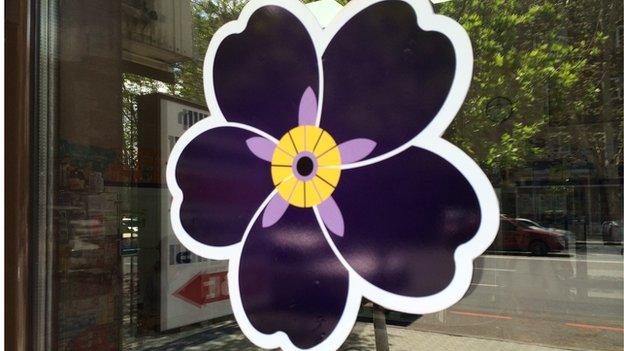Whatever happened to Peter the Armenian cook?
- Published
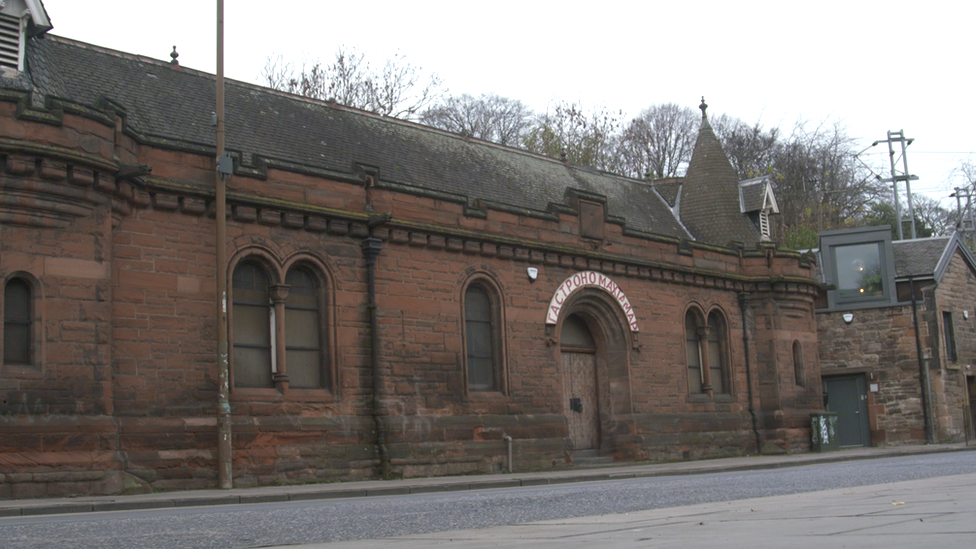
The former Victorian police station once housed a restaurant that has grown a culinary cult following
Just up the road from the Queen's Edinburgh residence at Holyrood Palace is a shuttered curiosity, a building that once housed a legendary eatery, known to its loyal patrons simply as "The Armenian Restaurant".
Edinburgh is now home to four Michelin-starred restaurants and some of the most opulent dining in the UK - but this place was something completely different.
Opened in 1979, the "Aghtamar Lake Van Monastery in Exile" was part exotic dining, part eccentric performance.
In the days before social media, it had a cult following and could only be found by rumour and word of mouth.
Reservations were notoriously guarded by the secretive Armenian owner and cook, who called himself Peter, and who served all-night banquets of traditional foods and dancing.
Then suddenly, a decade ago, Peter disappeared, leaving his customers hungry for one last meal and a clue to where he went.
Jo Spiller ate at the restaurant in 2010, right before it closed, and like other diners, only found it by word of mouth.
She says: "I heard about it from friends, who heard about it from friends, and it was so difficult to book. My friend thinks he was calling a public phone box to make a reservation."
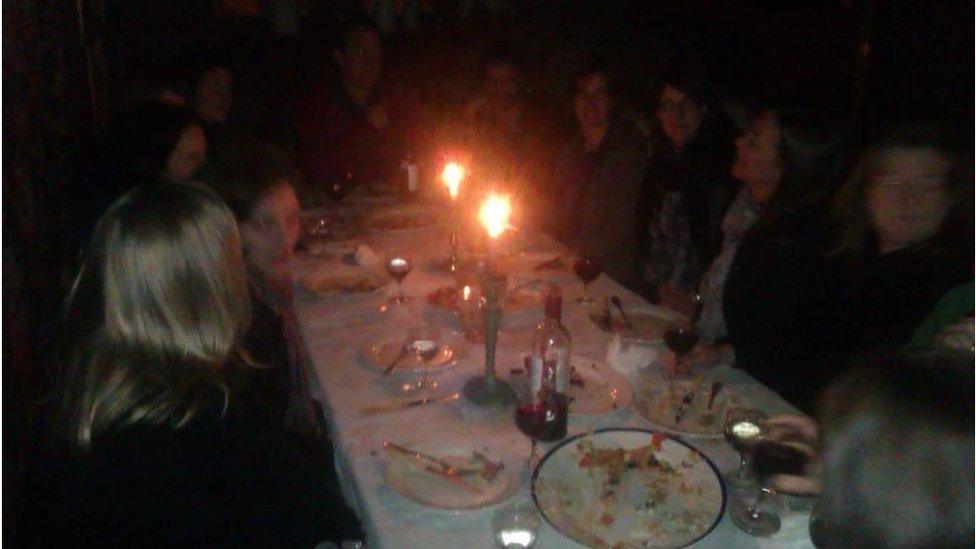
Jo Spiller says: "It was like being at an Armenian wedding, it was legendary."
She describes a candlelit banquet table in a darkened dining hall, surrounded by Armenian and Soviet decorations.
Between courses of meat and wine, Jo also spoke to Peter.
She says she remembers a conversation about the Armenian genocide of the early 20th Century, a tragedy which cast a long shadow over his country.
Peter told her that the genocide, in which relatives were killed, had stayed with him.
She says it felt like a lot of family legacy was in the building.
Peter's restaurant has been sitting derelict for a decade but the premises is a listed building, monitored by Edinburgh's Cockburn Association.
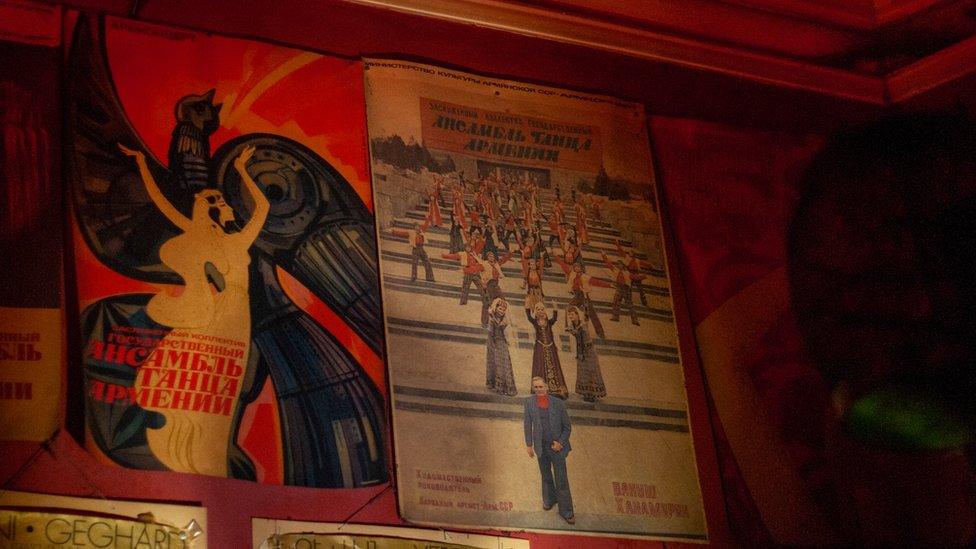
Armenian and Soviet decorations were on display in the restaurant
Its director Terry Levinthal met Peter to discuss maintaining the building but also ate there before it closed.
He says: "The experience of the place was one of these incredibly unique and authentic activities that only comes from someone listening to his own tune.
"As tourists and people now look for authentic experiences, Peter was ahead of his time in presenting himself and his culture for others to share.
"Today, it would be badged and branded by a celebrity chef, which just wouldn't be the same."
By all accounts, Peter was not, in fact, a trained cook, rather an immigrant simply serving the family dishes he had grown up with. But inadvertently, he helped change the perception of what food and dining could be in Scotland.
Food journalist Cate Devine says she has seen Peter's influence on Scotland's chef's and restaurants.
She says: "The kitchen used to be cut off from diners and the food they received. But Peter would come out and meet and greet people, which was astonishing then.
"Now, food is central, but there has to be something else too, like mystery and theatre. If you've got the personality, why hide it?"
Good question. So where was Peter hiding?
I had one clue. I learned Peter also owned an Armenian rug shop in Edinburgh, which is now also derelict.
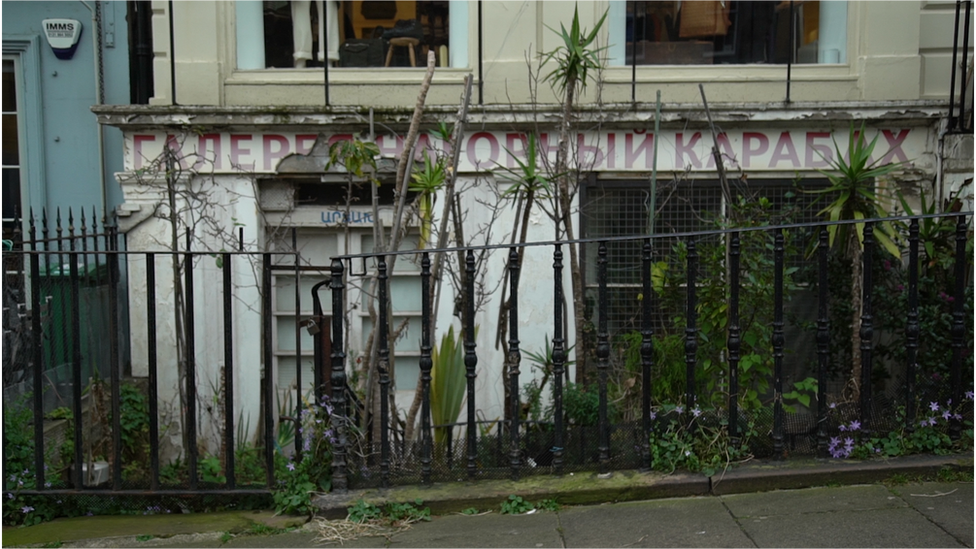
The Armenian rug store was crumbling, but had plants seemingly cared for by someone
I left a handwritten note asking him to call me but assumed that was where the search would end.
Suddenly, one month later, there was a message on my phone, a voice with a thick Armenian accent.
"Thank you for your creative note, I would be delighted to meet," it said.
Peter had re-emerged and agreed to give me a tour of his old restaurant.
When I pushed open the massive wooden door, there was a small figure in an Armenian hat, graciously welcoming me inside. This was still his restaurant and I was still a guest.
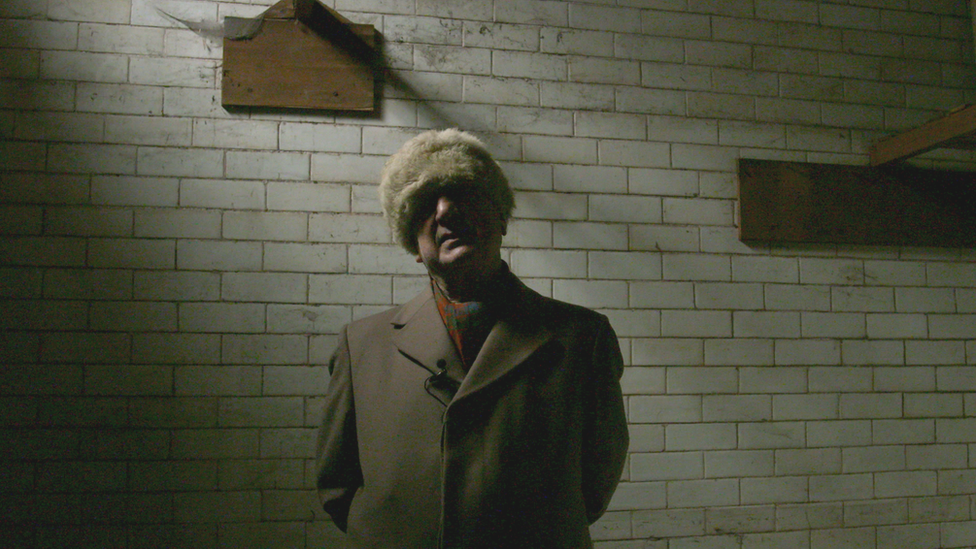
The mysterious Peter in the remains of his old kitchen.
With his hands behind his back, Peter began a tour, detailing the architecture of the building. But I wanted to know about him.
Peter is deliberately vague about the details of his life. He says he is now "near 80" and first came to Scotland in the 1970s to study.
"I'm not really a cook, not a trained cook," he says.
"I just realised I could make my hobby into my work. I was encouraged by friends when I would host privately."
He may not have been a trained professional, but it didn't stop him from embracing the culinary craft and consciously experimenting with what dining could be - part cook, part artist.
"I was trying to smash the barriers of general dining, the whole process," he says.
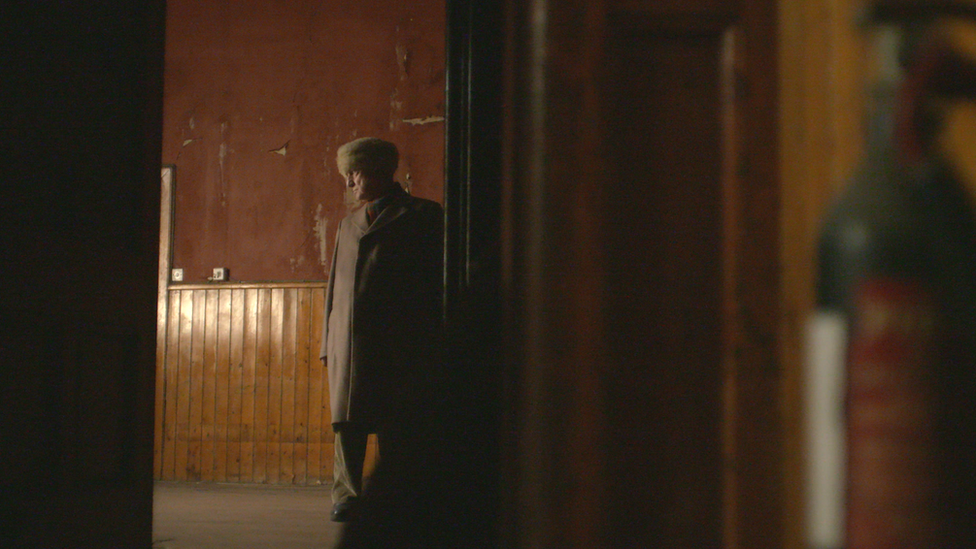
The restaurant was robbed of both its decorations and identity: a break-in saw all its priceless Armenian antiques stolen
Peter confirms that the booking number could only be obtained by word of mouth and even then a reservation only made if questions were answered to his satisfaction - his meals were not for the casual diner, they were an experience to be earned.
"I'm not doing it for financial rewards, I would only do it if they (the guests) were coming here for some reason I was looking for," he says.
But mystery and exclusivity were the secret ingredients.
"People were so keen, I couldn't control the numbers," he says. "Some nights we had guests in the three figures, people would bring chairs from home for more seating."
So why close the doors on such success? Where had Peter gone?
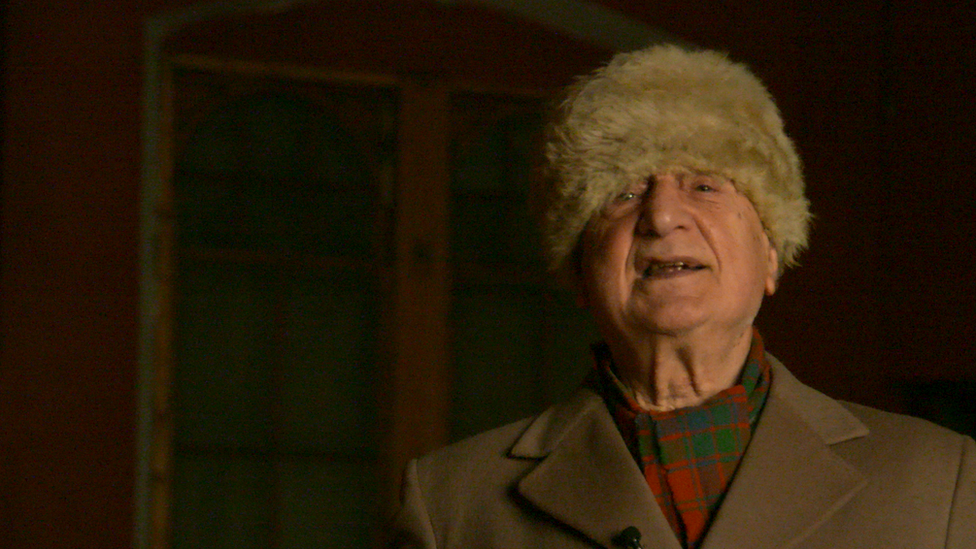
"You should be able to bring out the things you like doing," says Peter
He hadn't left Scotland and he hadn't abandoned his customers, he says.
Rather, a robbery a decade ago saw his beloved restaurant stripped of all its priceless Armenian antiques and decor. Distraught and disillusioned, Peter simply shut it down and retreated from the public eye.
But in the dark, now derelict, ruins of his old kitchen, he offers his guiding philosophy - the simple recipe to what has made his legacy into a local legend.
He says: "You should be able to bring out the things you like doing and try to help other people also join you and share it with you, if they like it."
Related topics
- Published24 April 2015
